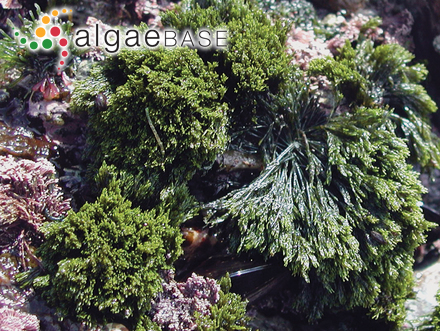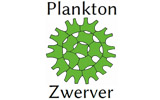Cladophora rugulosa G.Martens 1866

Current name:
Cladophora rugulosa G.Martens
KwaZulu-NatalFrederik Leliaert (Frederik.Leliaert@ugent.be)
Publication Details
Cladophora rugulosa G.Martens 1866: 112, pl. II [2]: fig. 3
Published in: Martens, G. von (1868 '1866'). Die Tange. Die Preussische Expedition nach Ost-Asien. Nach amtlichen Quellen. Botanischer Theil. pp. 1-152, pls I-VII. Berlin: Verlag de Königlichen Geheimen Ober-Hofbuchdruckerei (R.Y. Decker).
Type Species
The type species (lectotype) of the genus Cladophora is Cladophora oligoclona (Kützing) Kützing.
Status of Name
This name is of an entity that is currently accepted taxonomically.
Type Information
Lectotype locality: Port Natal (Durban), South Africa; (Silva & al. 1996: 779) Notes: Silva et al. recommend consulting Papenfuss (1943a: 80) for further information regarding the lectotype locality of this species.
General Environment
This is a marine species.
Created: 08 March 1998 by M.D. Guiry.
Last updated: 24 March 2022
Verification of Data
Users are responsible for verifying the accuracy of information before use, as noted on the website Content page.
Taxonomic note
According to Leliert & Coppejans (2003: 61-2) "Hoek (1982: 169) proposed to synonymise C. rugulosa with C. prolifera,
based on descriptions and illustrations of C. rugulosa by Papenfuss (1943), Jaasund
(1976), Egerod (1975), Womersley & Bailey (1970), Sakai (1964) and Taylor (1945).
Other authors had differentiated the two species. Papenfuss (1943: 80) distinguished
C. rugulosa on the basis of longer cells, more prominent main axes, and more
pronounced annular constrictions in the cells. Papenfuss & Chihara (1975: 313)
argued that small rhizoid-like processes at the proximal end of the basal cells are
only present in C. rugulosa. van den Hoek (l.c.) rejects the above arguments because
rhizoid-like processes are also occasionally present in some C. prolifera plants and
cell dimensions are too variable in C. prolifera to split off the coarser C. rugulosa.
We compared the South African specimens with C. prolifera from Europe, Kenya
and Australia. Based on our observations two species, C. prolifera and C. rugulosa,
both occurring in South Africa, are not identical owing to completely different modes
of attachment. C. prolifera is characterized by the presence of rhizoids with annular
constrictions developing from the lower part of the basal cells, growing down along
the cells below where they entangle with one another to form a conspicuous %u2018stipe%u2019
(figs 5B, 6C, D). In C. rugulosa this kind of rhizoids is absent (Martens 1868: Pl. 2, fig. 3); here the plants are attached by basal branching rhizoids developing from the
base of a conspicuous stipe cell with annular constrictions. The rhizoids form a basal
clump giving off numerous, densely clustered stipe cells (fig. 5H). The South African
C. prolifera also differs from C. rugulosa by its smaller cell diameters, but since the
cell diameter of C. prolifera is shown to be very variable, this character is less useful
in distinguishing both species (Table 2)." - (16 February 2013) - M.D. Guiry
Linking to this page: https://www.algaebase.org/search/species/detail/?species_id=3699
Citing AlgaeBase
Cite this record as:
M.D. Guiry in Guiry, M.D. & Guiry, G.M. 24 March 2022. AlgaeBase. World-wide electronic publication, National University of Ireland, Galway. https://www.algaebase.org; searched on 24 April 2025
 Request PDF
Request PDF














